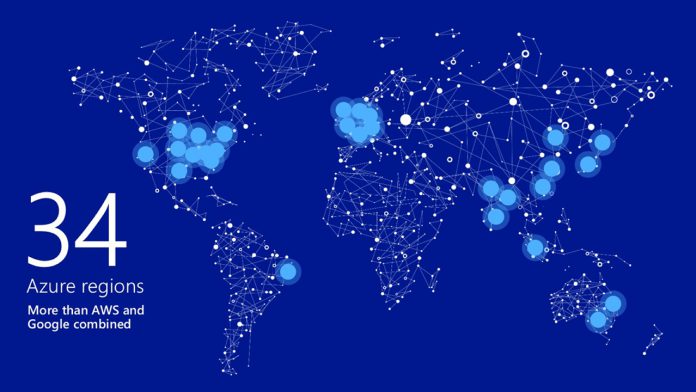“I’m really proud — I just learned yesterday that we were recognized as having the highest availability of any cloud over the course of 2016,” Greene said during the keynote. She added with a chuckle, “I think 2017 will be promising, too.” She was discussing data compiled by Gartner research division CloudHarmony. The firm found that Google Cloud suffered just 74 minutes of total outages during 2016. It is an impressive figure next to AWS with 108 minutes (a number already surpassed in 2017 incidentally) and Microsoft Azure with 270 minutes.
Microsoft Hits Back
While the numbers seem to be solid, Microsoft is taking issue and says Google is missing one key point. Specifically, Azure runs in many more regions than Google Cloud and AWS. Microsoft says it has 34 regions, AWS says it has 16 regions, and Google Cloud Platform says it has six. The company thinks taking regions into account presents a more accurate picture of outage totals. Microsoft issued this statement: “Microsoft has 34 Azure regions online worldwide, more than any other provider. When looking at average uptime across regions, rather than total downtime across a disproportionate amount of regions for each provider, Azure reliability is in line with that of the other cloud providers measured and in fact has consistently had global uptime upwards of 99.9979% for Compute in the past 12 months alone. What we hear from our customers is that uptime is a more useful measure of availability.” Microsoft’s assertions are not unfounded. Jason Reed, vice president at Gartner and the founder of CloudHarmony says Microsoft’s claim is realistic. “I think a more appropriate method of comparing cross vendor availability at a high level is average downtime per region – i.e. total downtime/# regions,” Read said via email to GeekWire. “Additionally, I think it is useful to break out US and EU regions where a majority of their users would be impacted.”




